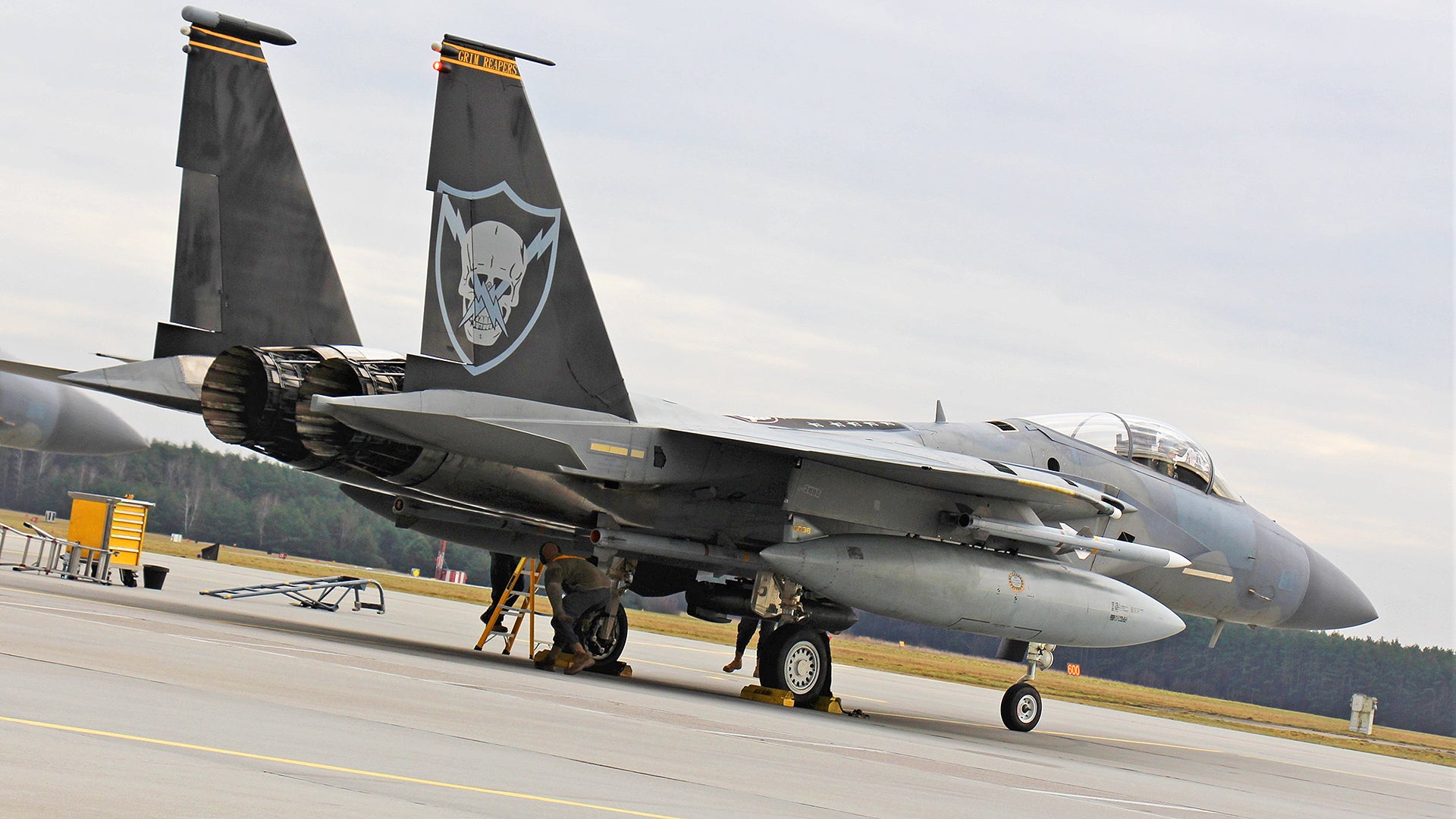U.S. Air Force F-15C and F-15D Eagle fighter jets arrived today at Łask Air Base in Poland to take part in a mission designed to “enhance NATO’s collective defense posture,” as well as support the permanent Baltic Air Policing (BAP) mission in the region. The deployment comes as the F-15C/D comes to the end of its successful tenure in Europe and amid continued East-West tensions as Russian forces in Belarus prepare to start a series of large-scale maneuvers. With ongoing fears of a potential new Russian invasion of Ukraine, some have suggested that these forward-deployed forces could take part in such an operation, or otherwise serve as a distraction.
The F-15C/Ds from the 48th Fighter Wing, normally based at RAF Lakenheath, England, touched down at Łask today and the jets — eight in all — will work alongside Polish and Danish F-16s that are already flying from Šiauliai Air Base in neighboring Lithuania as part of the BAP mission, which provides air defense coverage of the Baltic States of Estonia, Latvia, and Lithuania. You can see some incredible photos of the Polish F-16s that are involved in that mission here. Notably, the F-15s arrived in Poland complete with live AIM-120 Advanced Medium-Range Air-to-Air Missiles (AMRAAMs) fitted.
A Lakenheath F-15C fires a Sidewinder missile during a live-fire exercise last year:

Unusually for such a deployment, Allied Air Command, headquartered at Ramstein Air Base, Germany, made deliberate reference to the Russian threat in relation to the Eagle deployment.
“The extra fighters will bolster readiness and allied deterrence and defense as Russia continues its military build-up in and around Ukraine,” an Allied Air Command statement reads. “The aircraft plan to work with other allies throughout the region practicing air-to-air and air-to-ground training maneuvers in addition to the supporting the enhanced Air Policing (eAP) mission.”
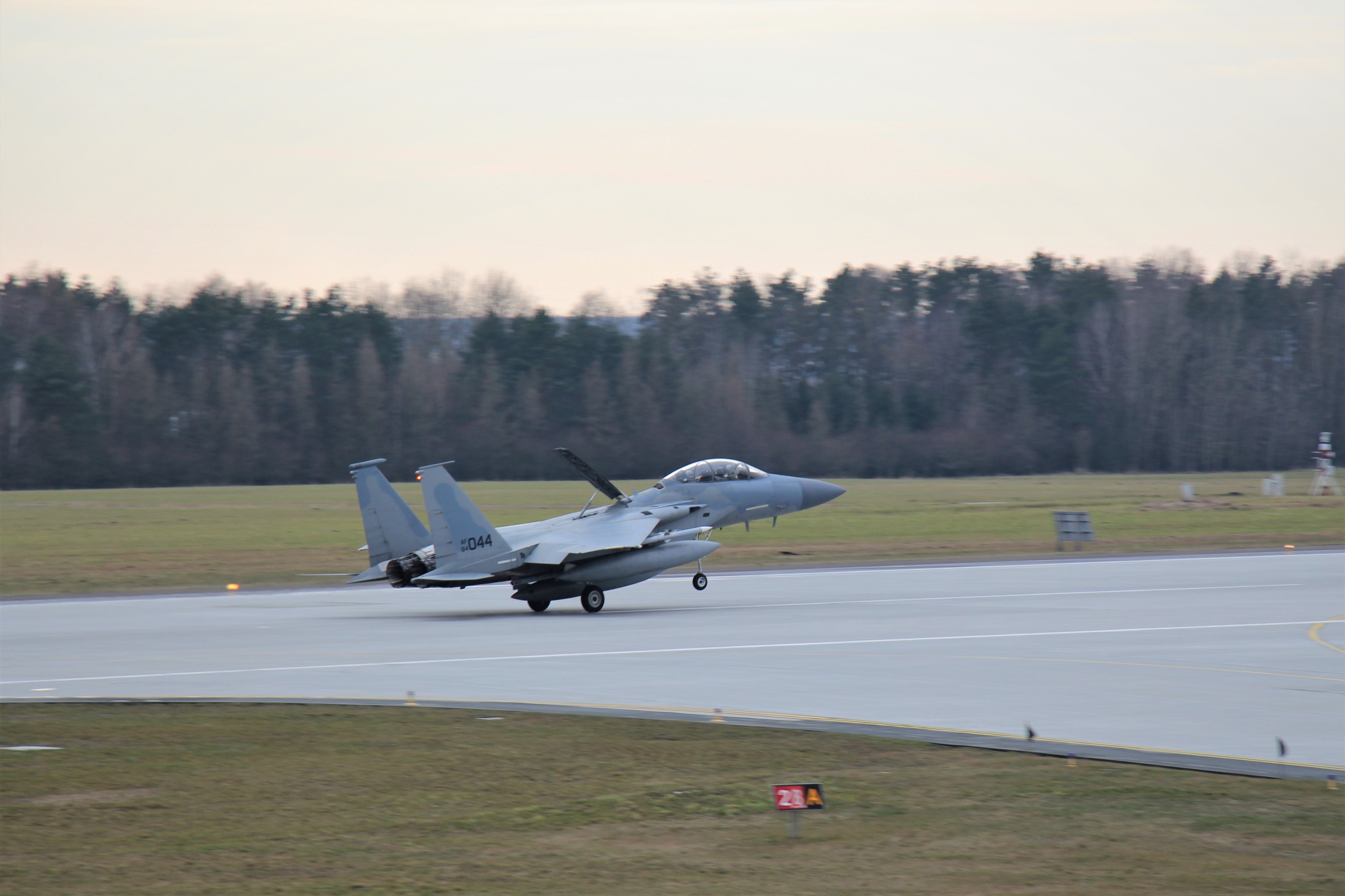
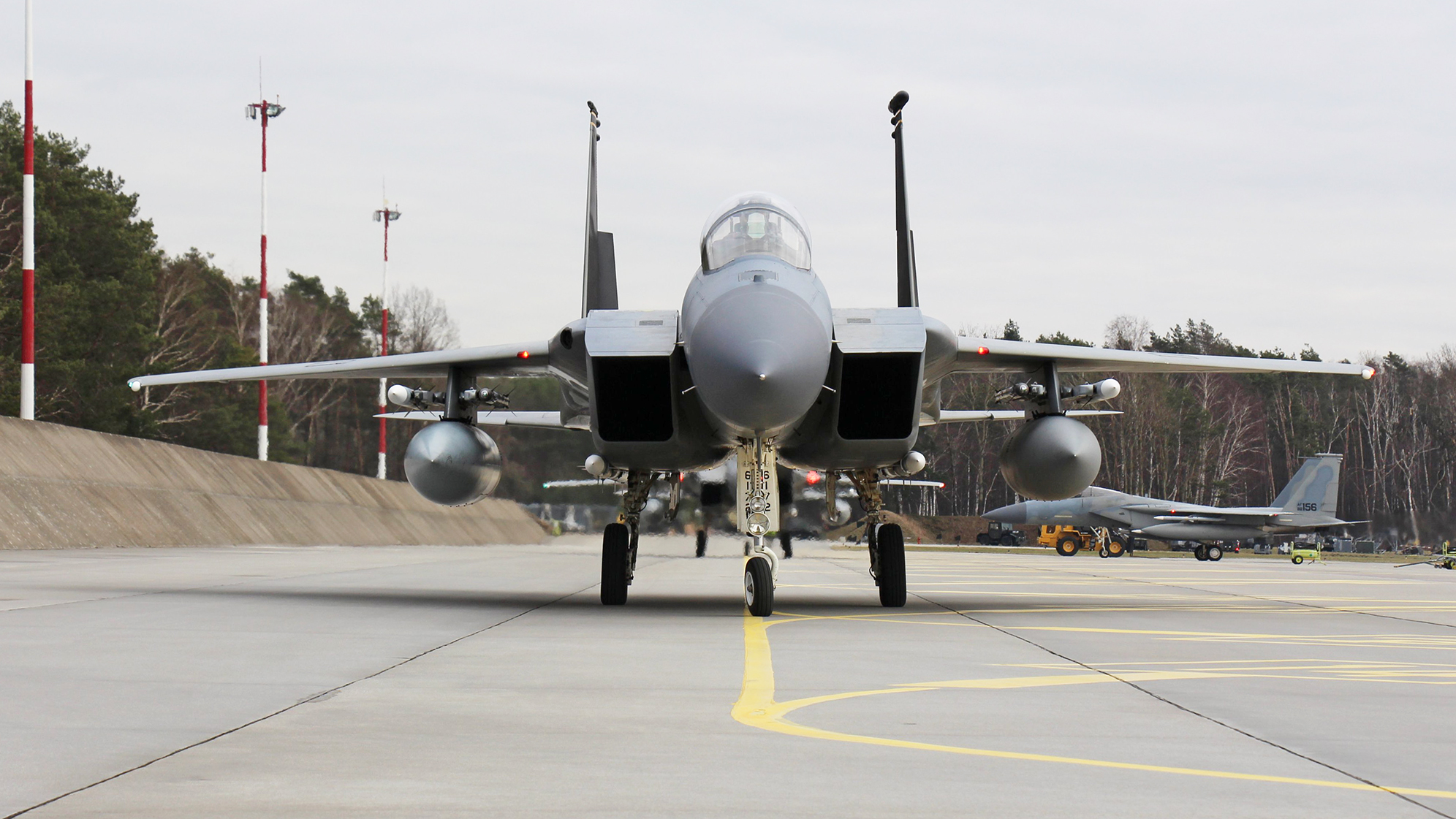
The eAP mission involves bringing additional fighters to critical regions where they reinforce local fighters as well as rotational NATO fighter deployments, like BAP, which typically involve smaller elements of fighters, normally around four per rotation. The eAP mission began in 2014, at that time in response to Russia’s annexation of Crimea.
“The deployment of U.S. F-15s to Poland elevates the collective defense capabilities on NATO’s eastern flank and the enhanced Air Policing mission,” added General Jeff Harrigian, Commander Allied Air Command and Commander U.S. Air Forces in Europe and Air Forces Africa. “The commitment of U.S. aircraft and airmen demonstrates the solidarity of the alliance, as we continue to work together in unity to execute our defensive mission.”
The decision to deploy the F-15C/D specifically may well have also been tailored to reflect the defensive nature of the mission. The ‘light gray’ Eagle is an air defense specialist, lacking the offensive ground-attack capability of the Air Force’s F-15E Strike Eagle and the F-16, both of which are also based in Europe.
The F-15C/Ds arrival coincides with Russia launching a 10-day Allied Resolve 2022 exercise in Belarus, which shares borders with both Poland and Ukraine. While just a part of the significant Russian military build-up in areas around Ukraine, the forces in Belarus have been seen as potentially some of the most threatening, with longstanding fears that Moscow could launch an invasion from Belarusian soil, pushing into northern Ukraine.
The Russian forces now in Belarus include reportedly up to 30,000 troops, plus two battalions of S-400 surface-to-air missile systems, and Iskander short-range ballistic missiles (SRBMs). Significantly, a lot of this Russian military hardware is now in areas of Belarus close to the Ukrainian border, in many cases within 30 miles. Indeed, the exercise scenario involves repelling an attack on the southern border of Belarus.
Numerous Russian fighter jets, including Su-35S Flanker multirole fighters and Su-25SM Frogfoot ground-attack aircraft, have also arrived in Belarus. The Su-35S jets are on temporary “combat duty” at Baranovichi Air Base, located a little over 300 miles east of Łask. They have deployed from their usual base in Russia’s Eastern Military District. Among the missions they have trained for is the interception of enemy aircraft, in this case, represented by Belarusian Su-25s.

Russian Tu-22M3 Backfire bombers have also recently undertaken flights over Belarus. Pairs of the missile-carriers have flown two missions in Belarusian airspace this month, being escorted by Russian Su-35S and Belarusian Su-30SM multirole fighters. At least one of the bombers was noted carrying a Kh-22 or Kh-32 supersonic cruise missile, which can carry a nuclear warhead.

The official Kremlin line, as espoused by President Vladimir Putin, is that Russian troops will leave Belarus when the exercises come to an end on February 20. It remains to be seen what such a withdrawal might actually look like and whether all Russian forces and all of their equipment will actually return to Russia.
Furthermore, even if Russia makes a move against Ukraine without using Belarus as a vector, it has still massed considerable forces elsewhere in the wider region. In particular, Ukraine’s southern border, including its maritime approaches, could be vulnerable to attack from Russian-occupied Crimea and a potential amphibious assault launched from the Black Sea.
Meanwhile, elsewhere in the Baltic region, Russia has recently deployed MiG-31 Foxhound interceptors armed with Kinzhal hypersonic missiles in its Kaliningrad exclave, as The War Zone
reported on earlier this week. The deployment of these missiles may well be a tit-for-tat reaction to the NATO troop movements that are seeing the alliance’s forces bolstered on its eastern borders.
For its part, the 48th Fighter Wing Eagles provide a powerful riposte to the current Russian airpower activities in the Baltic and Belarus, in particular. Today also saw the arrival at RAF Fairford in England of four U.S. Air Force B-52H strategic bombers from the 5th Bomb Wing at Minot Air Force Base, North Dakota. While this Bomber Task Force deployment was planned long in advance, their appearance takes on an additional resonance amid the current tensions in Eastern Europe.
The F-15C/Ds from Lakenheath’s 493rd Fighter Squadron, the “Grim Reapers,” are taking part in what might well be their last operational visit to another airbase in the region. The deployment to Poland comes as the squadron prepares to retire its remaining Eagles in preparation for conversion to F-35As. The “Grim Reapers” will then become Lakenheath’s second unit to fly these stealth fighters after the 495th Fighter Squadron, the “Valkyries.”
Official plans call for the “Grim Reapers” to continue F-15 operations until the end of April. However, it’s unclear if this new deployment will impact that plan.
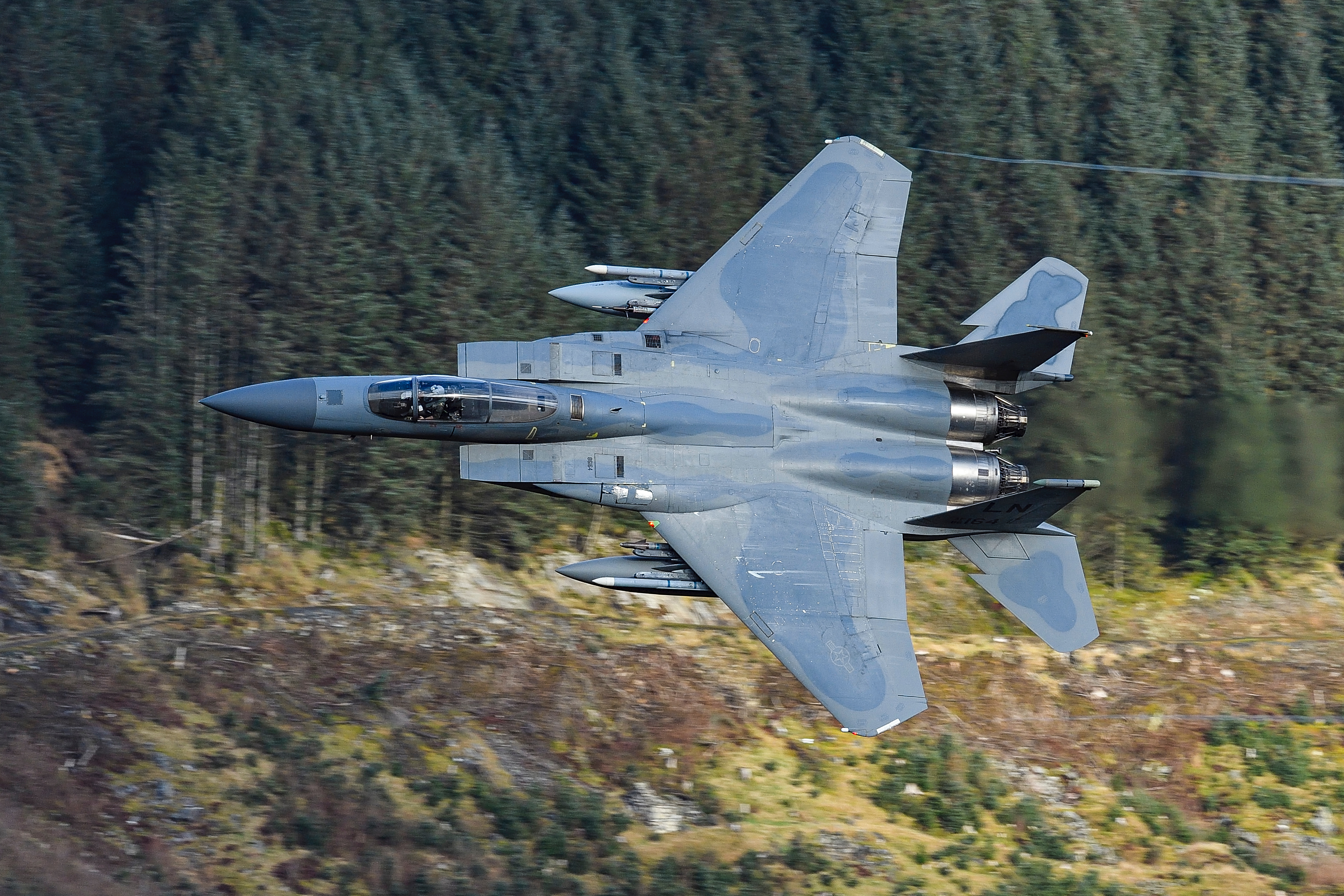
The Eagles of the 493rd Fighter Squadron are already in the process of returning to the United States to join other F-15C units in the Air National Guard. As well as the two planned F-35A squadrons, the 48th Fighter Wing will continue to operate F-15E Strike Eagles from Lakenheath, with the 492nd Fighter Squadron, “Madhatters,” and the 494th Fighter Squadron, “Panthers.”
The air defense-specialized F-15C/D has protected European skies since 1977 when the first of these jets arrived at Bitburg Air Base in West Germany, followed by Soesterberg in the Netherlands.
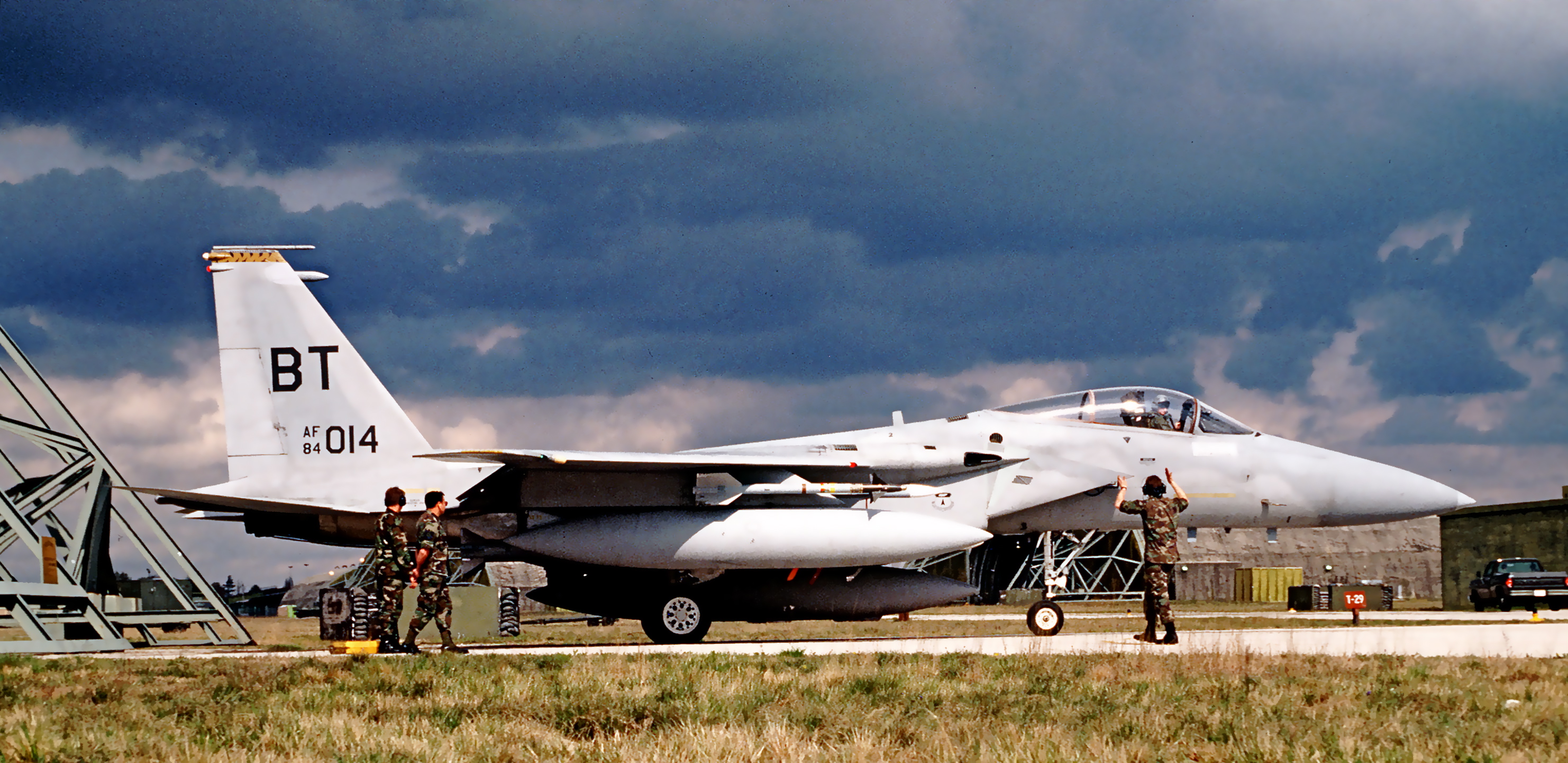
The “Grim Reapers” started flying the F-15C/D in 1994 at Lakenheath, initially receiving jets from the 22nd Fighter Squadron at Spangdahlem Air Base, when that unit transitioned to the F-16. The “Reapers” went on to score four aerial victories during Operation Allied Force over the former Yugoslavia.
Jamie Hunter and Rich Cooper made this video for the squadron as it prepared to end Eagle operations:

While Russia has repeatedly denied that it has plans to invade Ukraine, the continued deployment of troops and materiel to areas close to Ukraine’s borders means that tensions remain high. With the start of Allied Resolve 2022 today, the situation is only likely to become more fraught and the alliance will hope the appearance of F-15s in Poland will send a message of resolve to Moscow as well as signal readiness to NATO’s eastern states.
If this is indeed the last operational assignment for European-based F-15C/Ds, this high-profile mission will be a fitting swansong to an illustrious career.
Contact the author: thomas@thedrive.com
